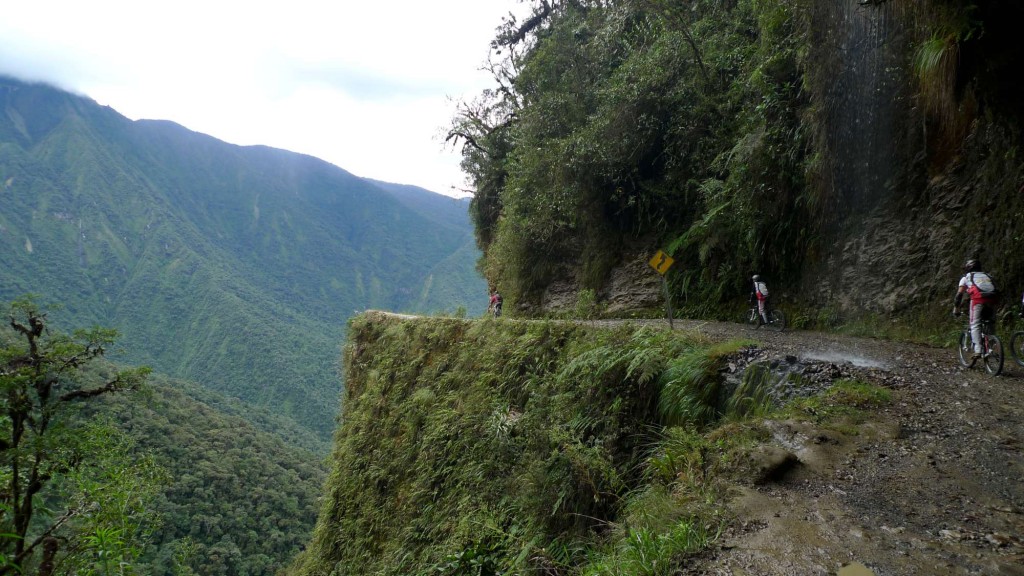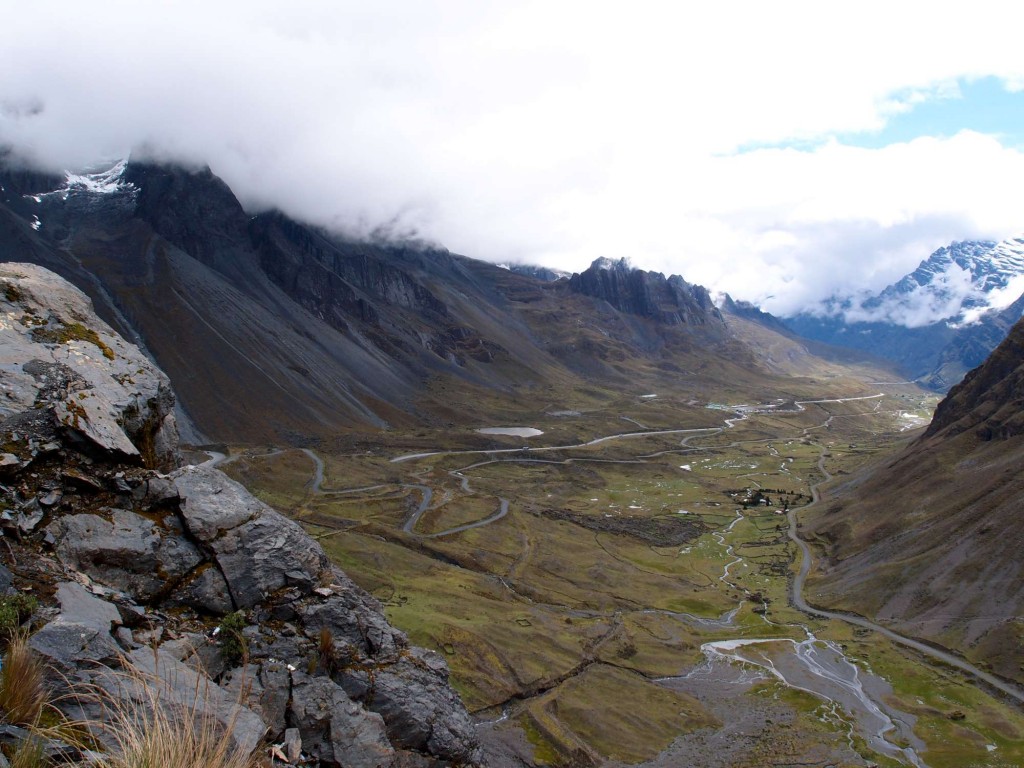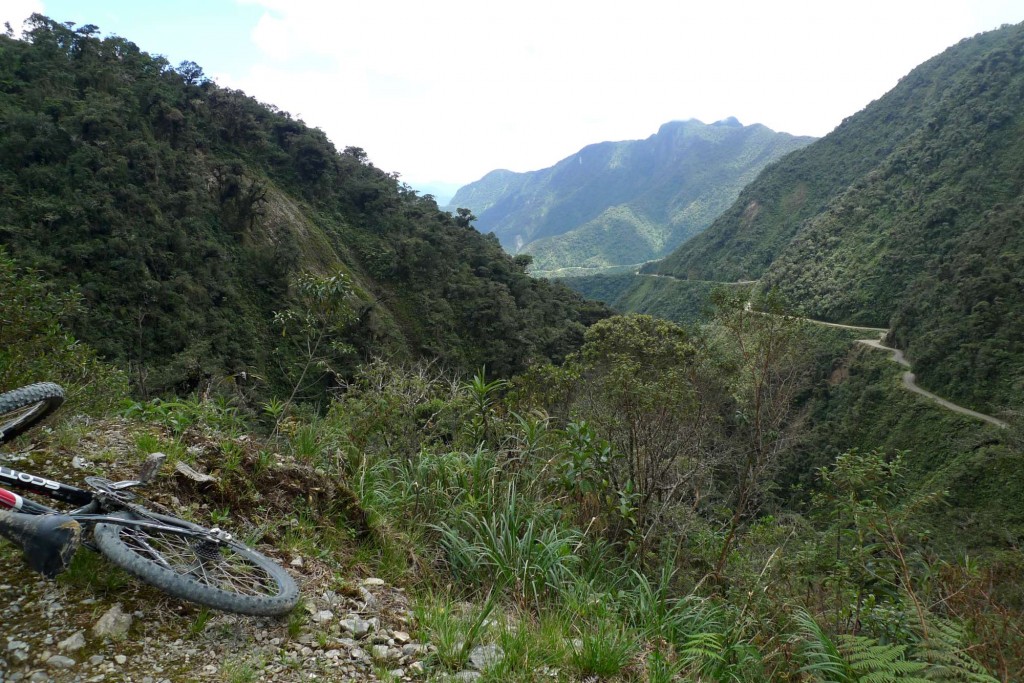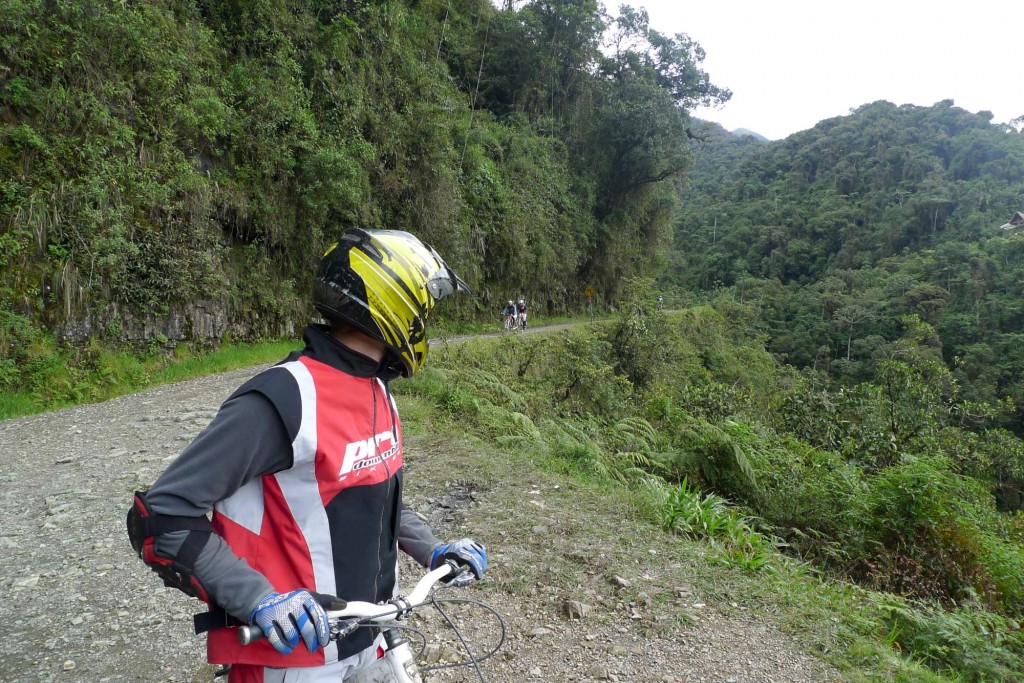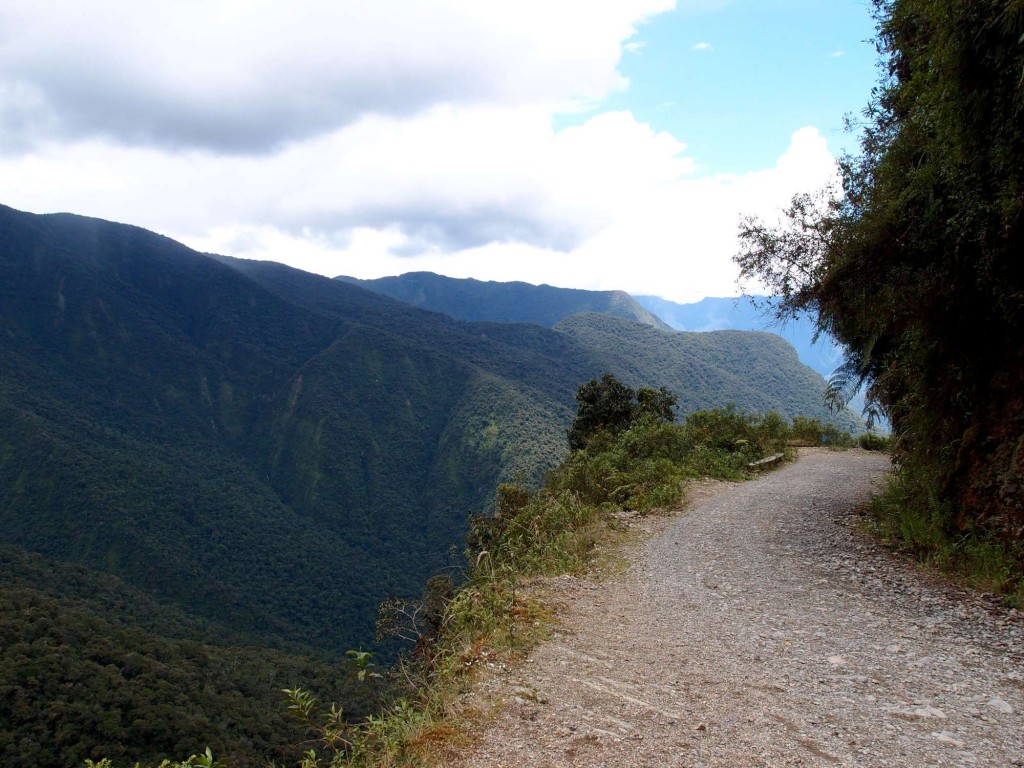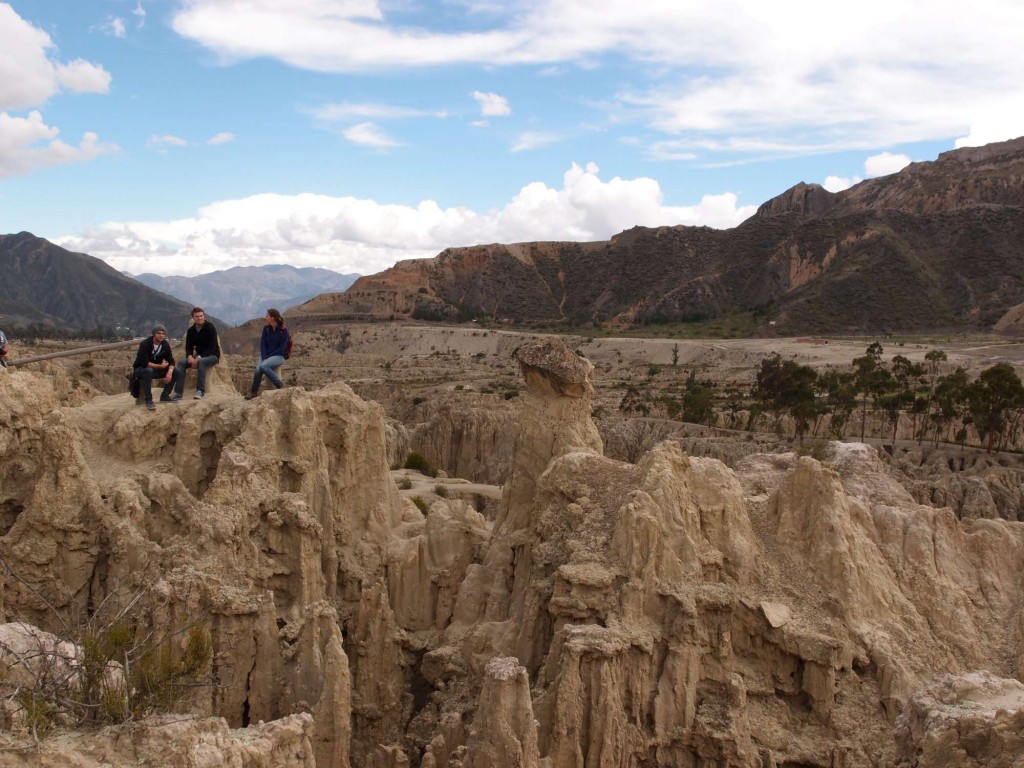¡Hola!
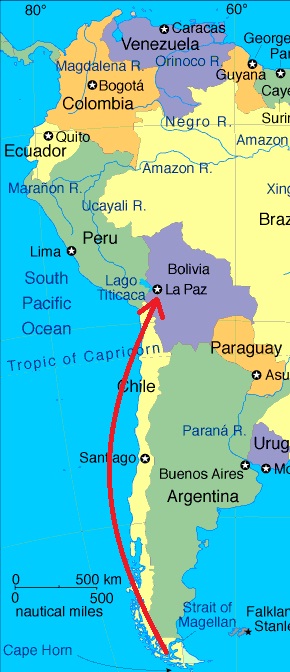 So we’ve spent a few nights in La Paz, Bolivia, and its been quite an experience so far. La Paz has to be one of the most unusual cities in the world. Geographically, the city is literally like no other. The area surrounding looks a lot like savannah, with perfectly flat grassy windswept planes stretching into the distance further than the eye can see. Whats so strange about this plane, however, is that it is uniformly 4100m above sea level. La Paz is situated in a kind of bowl naturally cut into the plane which drops down to about 3600m at its lowest point (its still the highest ‘city’ in the world), so looking out from the center of the city it feels like you’re in a mountain range. La Paz is north of Cairns (its almost exactly the same latitude as Port Douglas) but due to the altitude, the temperature all year round is from about 5-20 degrees daily.
So we’ve spent a few nights in La Paz, Bolivia, and its been quite an experience so far. La Paz has to be one of the most unusual cities in the world. Geographically, the city is literally like no other. The area surrounding looks a lot like savannah, with perfectly flat grassy windswept planes stretching into the distance further than the eye can see. Whats so strange about this plane, however, is that it is uniformly 4100m above sea level. La Paz is situated in a kind of bowl naturally cut into the plane which drops down to about 3600m at its lowest point (its still the highest ‘city’ in the world), so looking out from the center of the city it feels like you’re in a mountain range. La Paz is north of Cairns (its almost exactly the same latitude as Port Douglas) but due to the altitude, the temperature all year round is from about 5-20 degrees daily.
Bolivia is a landlocked mountainous country with little economic capacity to exploit its natural resources, and little in the way of possible legitimate agriculture. It does, however, have the perfect climate and altitude for growing high grade cocain, and consequently has become the worlds largest producer of the drug. To appease the United States and International drug control agencies, cocain has been made illegal, but coca leaf growing is permitted for cultural reasons. The locals really do use coca in milder forms a lot; every cafe serves coca tea, a drink which has a similar effect to coffee, and at present 90% of Bolivians chew coca leaves daily. The money, though, is in the international export of stronger products. The result of this massive coca industry is that pursuit of the national interests of the country do not align with its laws, and corruption and bribery, and a generally ineffective law enforcement system has developed. I’d guess this tension is a large factor in how the ‘anything goes’ attitude of Bolivia developed. Now there are ‘illegal’ cocain bars which are publicly advertised, and dangerous weapons, dynamite and metre tall fireworks can be purchased from street vendors. Its all very bizarre.
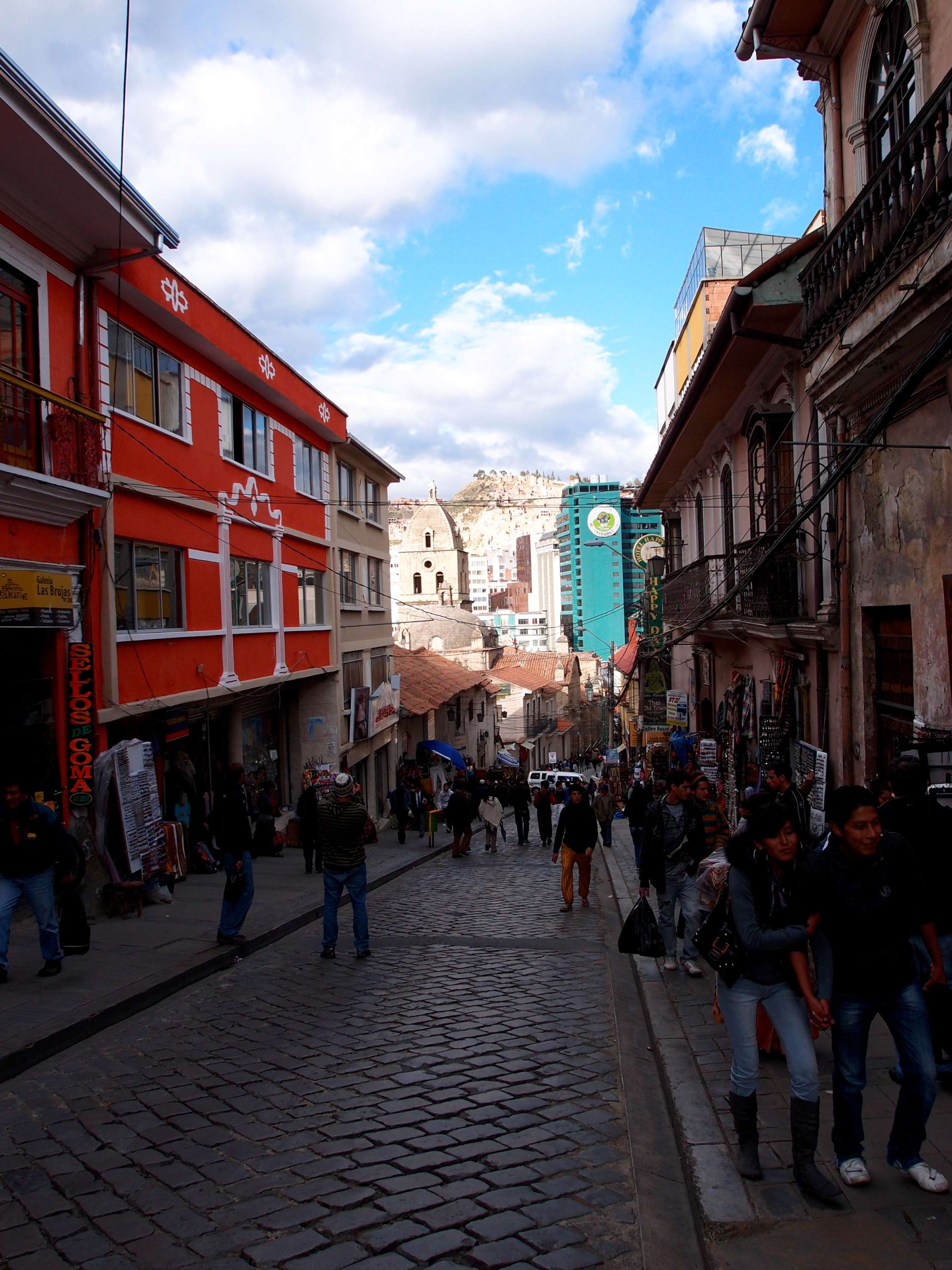
The streets of La Paz
The remoteness of La Paz has also preserved an interesting Indigenous culture. Most local women over the age of about 30, wear the traditional garb which consists of about 10 layered dresses which have so much material it makes even the thin ones look obese. Apparently they are so hard to remove and wash that the women reak of urine in confined spaces – I haven’t noticed this personally yet though, something to look foreword to I guess! The dresses are accompanied by these strange, rigid bowler hats which have a tiny circumference, so they perch on the crown in a precarious fashion and seem to serve no functional purpose. In markets, one quickly sees the Indigenous influence, as a good number of stores sell mummified baby llamas, or llama fetuses, presumably used for some spiritual reason.

A punnet of dried llamas
Today we walked to San Pedro Prison, another of the unusual sights in La Paz. San Pedro is the setting of the book ‘Marching Powder’ which some of you may have read, about an English drug trafficker who was sent to jail there for trying to move five kilograms of cocain to London (I recommend the book – its really interesting). Because of the level of corruption in the system, the jail as well as being a jail, functions as an enormous cocain processing factory, and has a system where inmates have to purchase their own cells (some even live in two story mansions built within the walls). Anyway, if you turn up at the right times you can actually bribe your way into the jail and take a tour around inside for about $10. The most powerful gangs control these tours, so its supposedly quite safe, as news of a harmed tourist would ruin the gangs lucrative business. Having all read the book we thought it would be neat to just go and check out the front gate and building but when we got there we ran into another group of tourists who were in the process of bribing their way in. When they asked if we wanted to come along, we thought we’d give it a shot. The jail sounded like a pretty scary place to be, but everyone says its such a great experience so we thought it could be worth it. So we waited for a while to see if this connection they had with some lawyer they had met that morning was going to work. Unfortunately (or fortunately- I’m not actually sure that I really wanted to go in) their connection failed and we got ordered to leave by a prison guard. It was an interesting experience though.
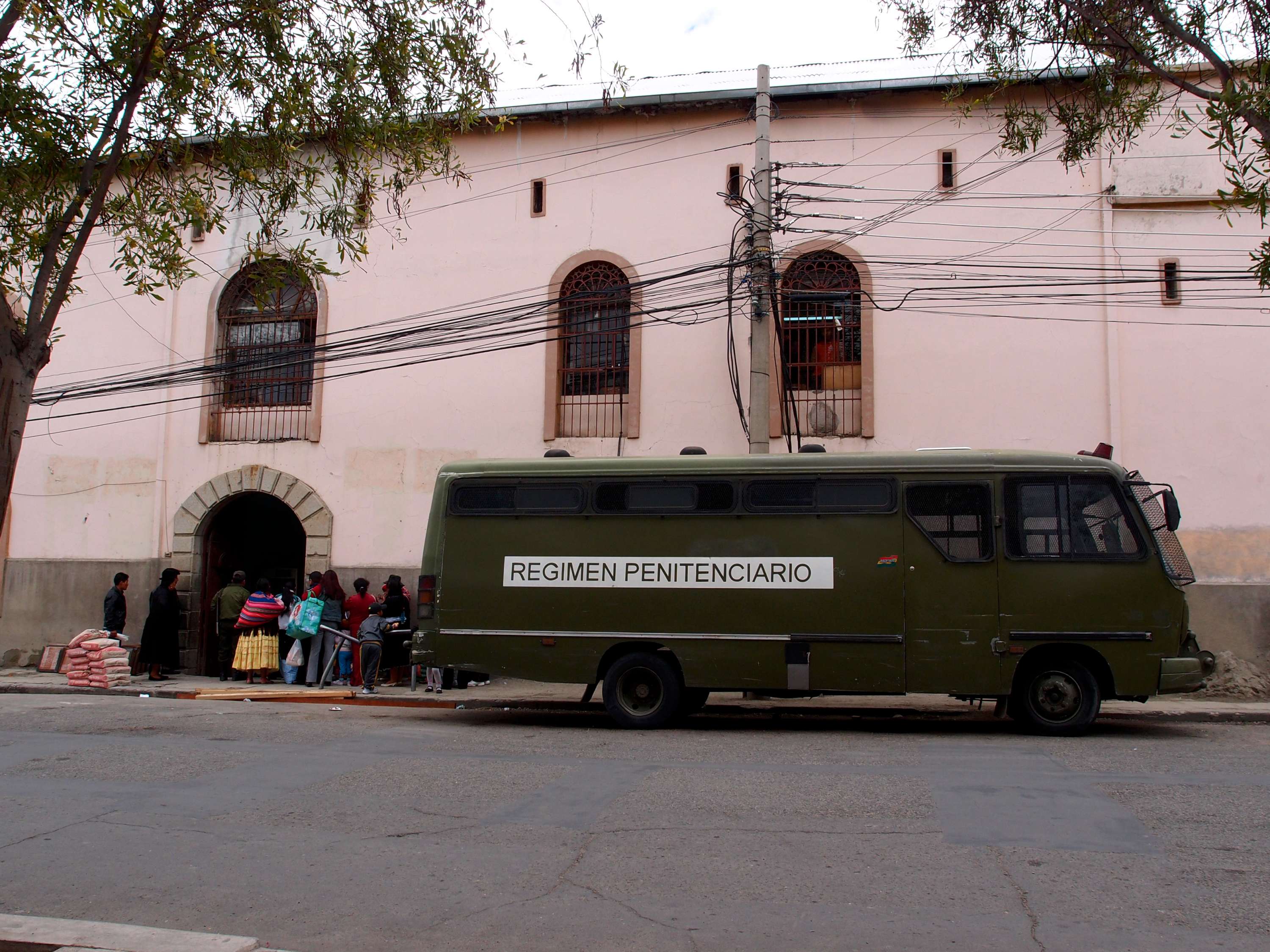
The gate of San Pedro- the people entering are the family members of inmates, many of whom live inside the prison
I think we’ve going to have a lot of fun here. Everything is really cheap (yesterday we got a 3 course meal with bread for $1.40) so we can afford to do all the crazy activities we couldn’t in Patagonia. Tomorrow or the next day we are going on a bike tour which is 67 kilometres of continuous downhill. It goes from the top of some mountain at almost 5000m down to wetlands.
Ooh yeah.. and Mark joined us yesterday! I thought I should throw that in somewhere…
¡Chao!
